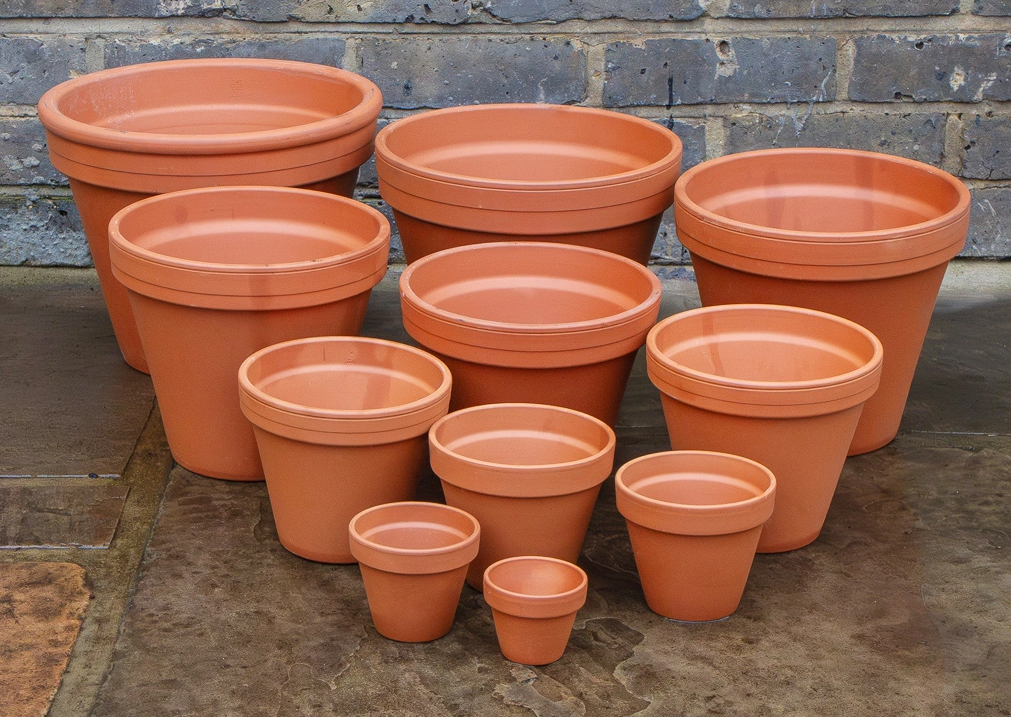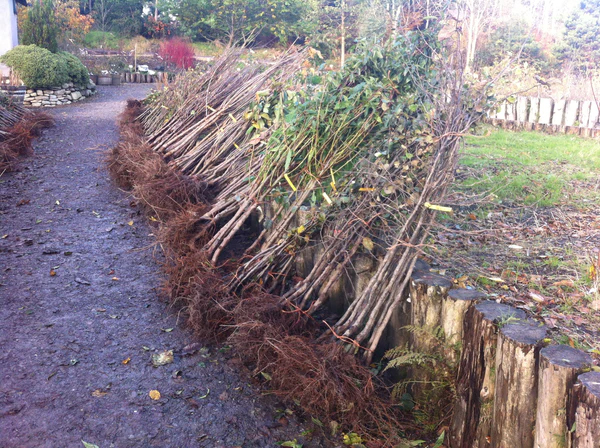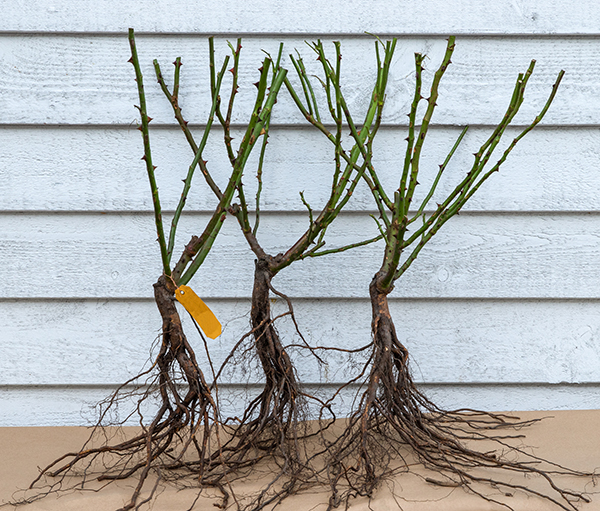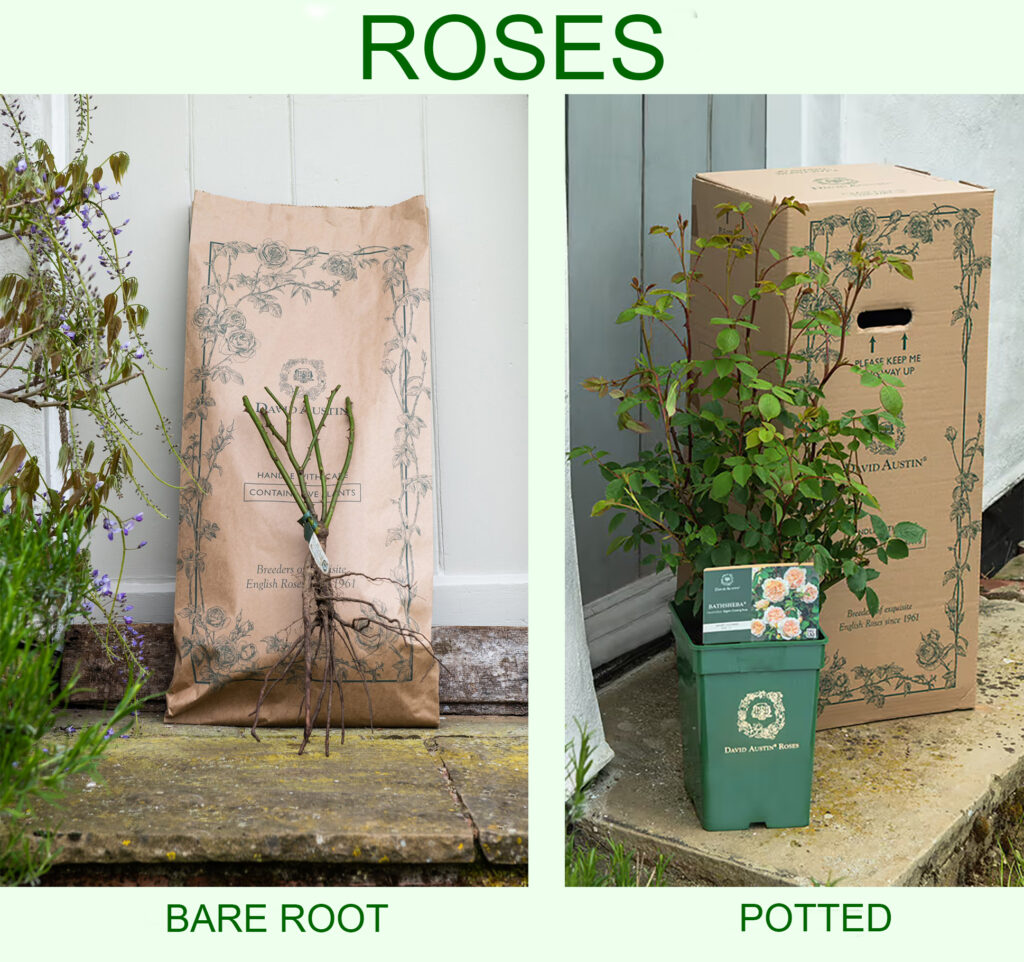Potted v Bare Root
Potted
What is a Potted Plant?
Potted plants are plants that have been raised in containers, often potted on from plugs and liners in 9cm pots or larger.

What size to choose?
9cm pots: A 9cm pot is about the size of a small takeaway coffee mug, it is an ideal size for planting Perennials, Herbs, Alpines & Heathers and many different small plants
1Litre This is the next common pots size and is used for many different plants.
1.3 Litre pots: A good size for Hedging as the plants are not too small but are still good value
2 Litre pots: Some young ornamental trees and most common shrubs are available in this cost effective size.
3 Litre pots: A lot of more unusual Shrubs and some trees are available in this size. Roses are found in this size pot or the next size up (4 Litre)
4, 5 and 7.5 Litre pots: Many trees and more unusual Shrubs are available in these larger sizes, good for a more instant effect.
10 Litre Pots: This size is mainly for ornamental Trees.
Advantages of Potted plants:
- Year round planting. Pot grown plants can be planted year round when the weather and ground conditions are sometimes more favourable for planting.
- Better for delicate root systems, e.g. Holly tends to do better when pot grown.
- Easier to hold if planting is delayed.

Disadvantages of Potted plants
- They cost more than bareroot plants.
- Environmentally they take more resources to produce and transport than a bare root equivalent.
- They take up more space, in the nursery, in the courier’s van, in your car etc.
- Pot grown plants can get hungry and rootbound if they are not taken care of properly.
Bare Root
What is Bareroot?
Bareroot plants are simply field grown plants which are lifted, transported and transplanted during the dormant season, November to early April. Nurseries take care to pack these bareroot plants so that the roots do not dry out in transit and they reach you in the best condition for planting.

What size Bareroot plants to choose?
- Planting small plants will generally give better results over time.
- Cost is usually the main factor in people’s choice, 1-2ft plants will cost considerably less than 4-5ft.
- 1-2ft Bareroot plants will be easier to plant than larger plants but they will need to be kept totally clear of weeds for them to do well and they will take several years to offer much impact.
- 2-3ft Bareroot plants are a good economical choice, they are nearly big enough to not get swamped by weeds.
- 3-4ft Bareroot is a good option for tree whips and Hedging as they will be well above any competition from weeds yet the roots won’t be too large for planting and they are not too tall to be knocked around by the elements too much.
- 4-5ft Bareroot is the best choice for hedging when an instant effect is desired or to get tree whips off to a head start, they will need a larger hole for planting and they will need to be checked that they are not getting loose in the ground from time to time after planting. This size is more likely to get battered by the weather, so in very exposed areas it may be best to plant in March after the worst of the winter has passed. This tree grade may require staking.

Bare Root Roses
Advantages of Bareroot plants.
- Cost effective; bareroot plants are often significantly cheaper, especially when ordering a lot of the same variety, ie. for Hedging
- Environmentally friendly; producing a bareroot plant uses less resources, ie. less fertilisers, less compost, less water, less plastic and less transport costs than a pot grown plant.
- Offers more choice; bareroot plants can be bundled together to store in the nursery during the dormant season.
- Economical to send by mail order; they can be bundled and pack into each other – nurseries can send several hundred small trees in one parcel!
- Grow well; Bareroot plants often get settled in and grow faster than pot grown plants.

Disadvantages of Bareroot plants.
- Require careful handling, the bare roots must not dry out totally or get exposed to the elements.
- Seasonal; bareroot plants can only be moved when they are dormant, between November and early April.
- Some varieties are not suited to planting bareroot as they don’t like the root disturbance, in those cases nurseries only supply those varieties potted.

Most of the information on this page supplied by
Future Forests


